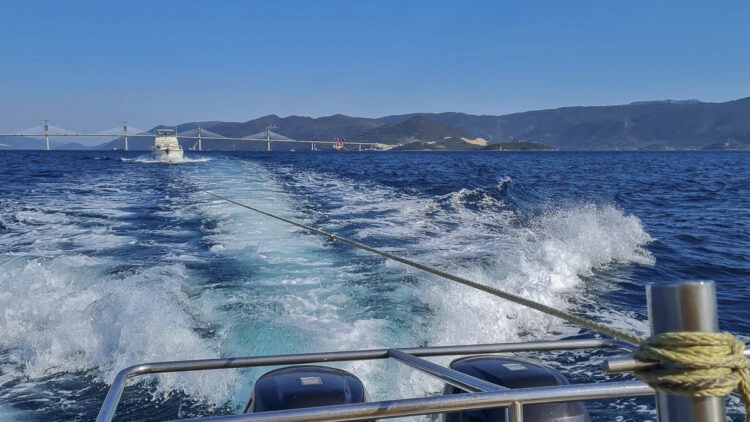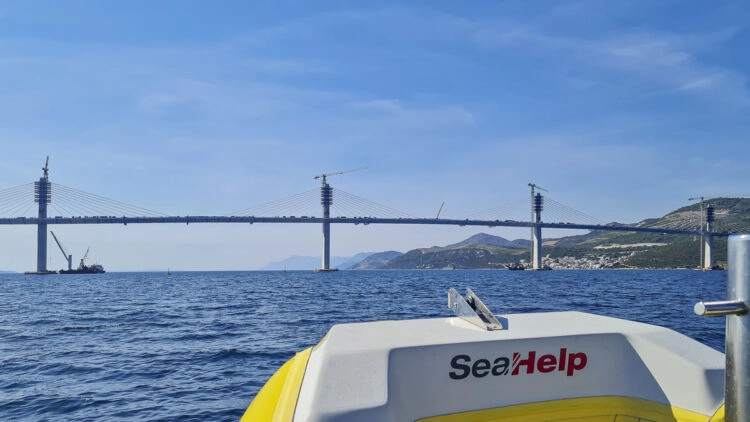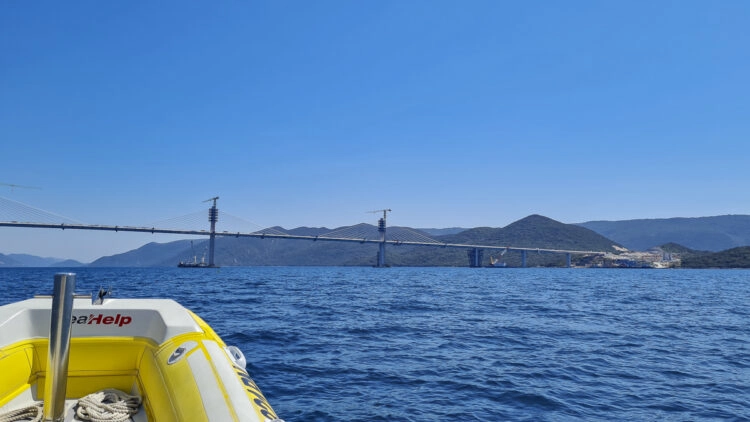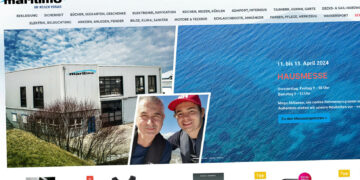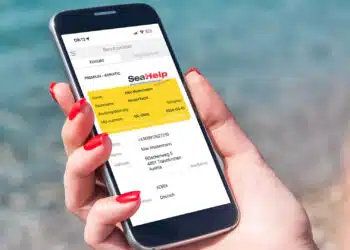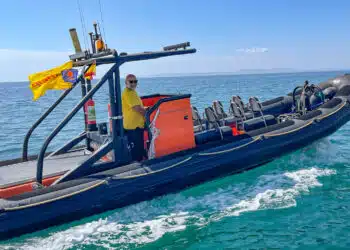The emergency call was received by SeaHelp headquarters on the morning of a sunny August day: the owner of an aging, ten-meter Princess motor yacht reported water ingress in his yacht and requested assistance. After telephone consultation, one of the yellow response teams set off at high speed to the site of the accident near Mali Ston on the north side of the Pelješac peninsula.
Arriving at the scene of the accident, the helpers quickly realized that water had entered one of the two engine rooms due to a corroded exhaust pipe, causing the bilge to slowly fill up. It turned out to be correct that the SeaHelp staff had already advised the accident victim via cell phone to drop anchor at a suitable place, stop the engines immediately and wait for the arrival of the rescue boat.
Water ingress / water penetration in the engine room – a common problem
“When water ingress is reported to us, we often have to deal with water penetrating through the engine room, for example, due to a defective exhaust, poor maintenance or a leaking shaft after a collision, for example, says Marko Orlic.
Although the journey to the Haverieort for SeaHelp members is free in this case. Also for the towing into the next workshop and/or to a crane SeaHelp member would have to pay normally nothing. However, this only applies if the victim can no longer move under his own power, says the SeaHelp operations manager from the headquarters in Punat.
In this case, however, it was still possible for the accident victim to continue his journey with only one of the two completely separated machines, slowly but safely. The owner, a gentleman over 80 years of age, unsettled by the situation, nevertheless asked that the rescue boat accompany him to the nearest marina. The helpers gladly complied with this (chargeable) service.
The SeaHelp staff decided to tow the Princess
However, since the nearest marina with a crane was about 45 nautical miles away, and the skipper was having a hard time staying on course, the SeaHelp staff decided to tow the boat just behind the Pelješac Bridge (Pelješki most in Croatian) to hook and tow. Another reason was that the defective Princess yacht could only make five to six knots of speed with its remaining single engine.
After six hours of sailing, the saving marina was safely reached
No sooner said than done: after passing the buoys on the 2,374-meter-long bridge, which from the coming season will bridge the bay of Mali Ston and thus connect Dubrovnik-Neretva County with the rest of Croatia, bypassing the (Bosnian-Herzegovinian) Neum Corridor, the rescue boat took the Princess in tow; the average man left one engine running, and so after only six hours of travel the rescuing marina could be reached. The average person thanked the rescue team sincerely and had his engine repaired immediately – a completely normal mission for the “Yellow Rescuers at Sea” of SeaHelp.
Free SeaHelp app for all skippers (even without SeaHelp membership)


